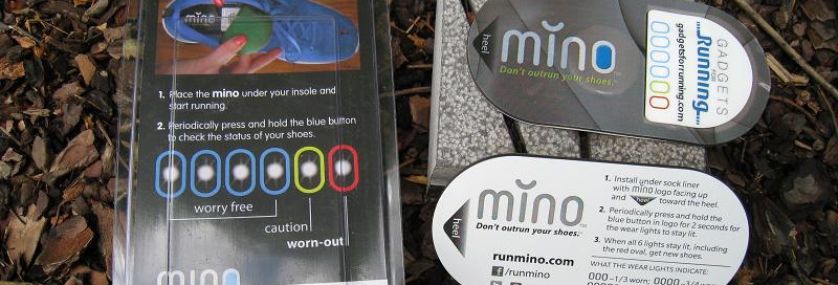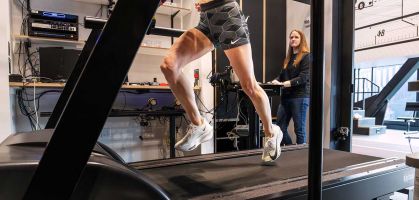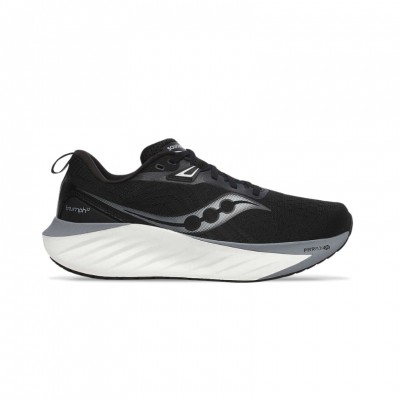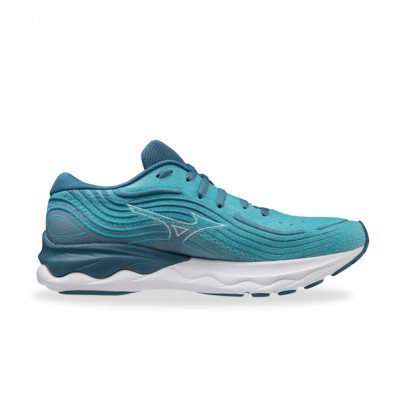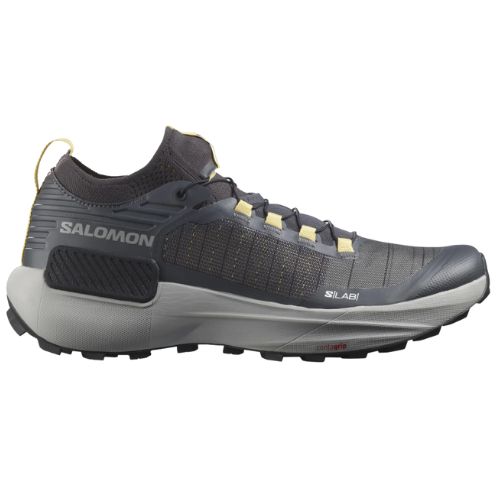The world of technology is in constant ferment, continually advancing with new products or improvements to existing ones.
Among the new products of recent appearance, recently the Mino was launched, which surprised everyone for its originality and simplicity, so much of the sports equipment sector began to talk and rumor about it.
At Runnea we have had the chance to test it thoroughly and below we tell you our experience.
What is the Mino:
If we try to define it as simply as possible and without resorting to technical terminology, we could say that the Mino is a step counter that indicates the "level of life" we have consumed from our running shoes so that we have an idea of when it might be necessary to change them.
?
Describing it with a little more rigor, it is a piece of oval foam measuring 10 centimeters wide, 5 centimeters high and 25 millimeters thick that is placed in the heel of the shoe, under the insole and has a chip programmed to count steps, a fila of LEDs that indicate the level of use that the shoe has been wearing and a button that we can press to consult the status of the shoes.
The row of lights comes on progressively depending on the number of steps the chip has counted.
There is no concrete formula that really works when it comes to knowing the lifespan of a shoe and where it stands. At most, we can take as a "rule of thumb" the ranges of 800-1000 km for training shoes, 500-700 km for mixed shoes and 200 km for flying shoes.
In any case, these values are only indicative and, as they say, they fail more than a shotgun because it depends on the runner (weight, technique, efficiency, ...), weather conditions (very cold, very hot, ...), care that has had the shoes (washing, if they have been alternated with others, ...), etc...
You may be interested in: How does the choice of running shoe influence the probability of injury?
From my point of view, there is no scientific answer to the questions "How long will they last? How many kilometers will I be able to do? Are they ready to be changed?" but they must be answered by intuition, by the feelings of the person wearing them, etc.
It will sound very strange, even more if it comes from someone "of science" and who writes about running gear, but it is what my experience tells me and, in fact, I would not be able to say how many kms my shoes have. Well, before using them I know they have zero but as soon as I start using them I lose count or rather I don't care because I think they should be changed when it's time, whether they have 200 kms or 1000 kms.
What comes in the package:
Inside the blister come two ovals, one with the Mino and another piece equivalent in size and shape but with nothing but the foam to place it in the shoe in which the Mino is not going to go in order to compensate for the 25 millimeters of height and that we go the same in both shoes.
?
How to install:
To count the steps, the Mino counts how many times our heel presses on the chip with what should be placed on the heel of the shoe with the chip facing up.
That would be enough but, obviously, the place where it should go is under the insole and, to prevent it from moving, it has a face with adhesive that allows it to be fixed to the base of the shoe.
?
To compensate for the height it introduces in the slipper, on the other one we have to place the other piece following the same process.
?
How it is used and how it works:
It does not require previous loads, nor calibrations, nothing at all, from the moment we stick it on the base of the slipper, it is ready to count how many times we press it (how many steps we take).
Although it is an accountant, it is not a pedometer and does not have a display to know the exact number of steps it has counted, but for that it uses the fila of LEDs.
 ?
?
They have estimated that the lifespan of a pair of shoes is about 650 kilometers (they measure in miles so they have marked it at 400 miles) which, all said is somewhat short because, although it is something that depends on many, many factors, I think the range of 800-1000 kilometers is more realistic.
Since the Mino counts steps, they have estimated that there are about 600 steps per mile with what the device would really look at is when you reach 240,000 steps.
The circles have been colored so that you can have a quick reference of how the shoe is walking so that: as long as the first four blue ones light up we are calm, when the yellow one lights up we start thinking about looking for some substitutes and when the red one lights up, it tells us that the shoe has already exceeded that limit figure they have estimated.
?
The lights are not "worth" the same number of steps but, as explained in the oval: the first three lights are equivalent to 1/3 wear ( 2 life left), four lights (all blue) are equivalent to 3 wear (1/4 life left), if the yellow light comes on you have about 80 kilometers (50 miles) left and by the time the red light comes on, theoretically the shoes have died (at least as running shoes).
To turn on the little lights you have to press the button on the "O" for two seconds. The manufacturer recommends checking this every 3 to 4 weeks, but it is up to you.
?
As it goes in the heel, it will count all the times we step on it, whether running, jumping, walking, stomping, ... since it is not able to differentiate the intensity of the tread. Obviously, it is not the same the wear by compression that produces a walking step that one running but, well, we will accept octopus.
Additional comments:
I have been thinking about whether this approach of counting number of steps is better or if it is better to count by kilometers and the truth is that I would not be able to stay with one as "better" because both have their good things and their bad things so, counting that I do not think it is a determinant or reliable valor to try to quantify it, whether counting kms or counting steps, it seems to me one that can be worth as an indicative guide.
As it doesn't have a display, there's no way of knowing if it counts steps well, but from the design it has, I'm confident that it's capable of measuring them well because it's quite fixed and the chip is just under the heel.
What I didn't like is the size because with the 10 centimeters it has, it gets almost in the arch and you feel it goes there, plus it increases the drop of the shoe by 25 millimeters so I think it's something they should work on to make it thinner.
As I have commented so many times, I don't think you can count or quantify a priori the useful life of a shoe and that, even being the same runner and model, it can vary a lot depending on weather, running technique, fitness, terrain, care, ... but, well, as an indicator for those who want to have a guide, it can be worth.
The problem is that it is univocally associated with a shoe not only because it is attached to the base but also because it is not capable of carrying anything more than a count.
In addition, it is only good for one time, it can not be reset or reloaded so you have to have one for each pair of shoes you want to control and acquire a new one for each pair that we release.
Read more news about: Running News
